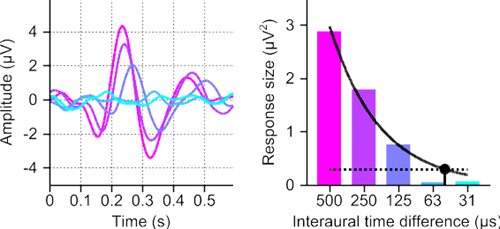Diagnostic Tests of Auditory System Health

How can we measure the health of the auditory system beyond the pure-tone audiogram?
Auditory selective attention is built on a complex neural signal processing system that spans cochlea to cortex. The vast majority of clinical work is focused on hearing loss in the cochlea. However, many individuals, such as those with (Central) Auditory Processing Disorders and some members of the aged population, are lost in noisy settings despite having normal hearing thresholds. Despite the importance of spatial hearing to selective attention, there is no clinical test that assesses the health of an individual’s binaural processing. We are working to develop such a test of binaural coding fidelity using EEG and behavioral tests.
Like most poorly understood health issues, auditory processing disorders are likely to be a collection of different underlying issues. Our goal is to differentiate and identify the behavioral phenotypes of distinct neural pathologies, allowing improved assistive devices, diagnosis, and coping strategies.
